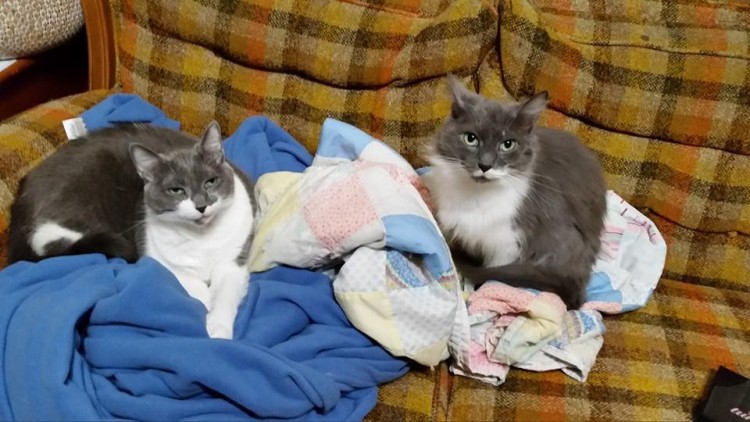Maintaining Your Cat’s Litter Box When You Have a Disability
Tonight I put on a pair of long johns, long socks and a T-shirt. Nope, I wasn’t testing out my Halloween costume — I was doing my job as a cat parent and preparing to enter the “litter box room” for the bi-daily scoopin’ of the poo. I acquired this task after becoming a full-time housewife more than a year ago. As a person with a disability, there are some household tasks that I have to modify to be able to do. Today I thought I’d go through the steps I take to scoop out our litter boxes. I hope this encourages you if you are disabled and thinking of getting a cat.
Getting Started
Before I even step one foot inside our litter box room, I change into a pair of long pants (ones that are usually reserved for an evening at home), an old T-shirt and a pair of long socks. I also remove my shoes. Now, I do not wear plastic gloves, but that is a good idea for added protection from Toxoplasma gondii. The last thing I do is grab a plastic bag.
Removal
Now here is why the long pants and socks are a must. I am unable to stand and scoop out our boxes, so I have to sit. This means that I make contact with litter that has been kicked out of the box. To keep things as sanitary as possible, long pants and socks are a must. If I kept my shoes on, I’d have more of a chance of tracking litter around the house. With a scoop, go through each box until all the clumps are gone. Put clumps into the plastic bag and seal it up when you are finished. Throw away immediately. If you managed to throw out litter, add a bit of fresh litter to the box. It should be two to three inches deep at all times.
I usually scoop the boxes out every other day. The litter is fully changed by my husband every few weeks. Since I am unable to lift the boxes, this job has been left to him. We keep track of how long it’s been fully cleaned on a whiteboard in our kitchen as a reminder for when it’s time to change it fully. Our cats seem completely happy with this arrangement, as long as it’s scooped regularly. Another added benefit of scooping every other day is that you can inspect the poo for any changes that might indicate a health issue that warrants immediate attention.
If you live alone and need assistance with lifting the boxes, I suggest asking a close friend for help. You may even offer to pay them.
Finishing
When you are finished scooping all the clumps into the bag and it’s sealed and thrown away, carefully take yourself to the laundry room (I’m lucky because our litter box room is right next to the laundry room) and take off your pants and socks and shirt. If your laundry room is not next to where your litter boxes are, take a few steps outside the room, strip down and take your clothes to the laundry room. If this is the case, you may want to have another plastic bag with you to put your clothes in so you don’t drag them over the floor. Finally, wash your hands thoroughly and you are done!
Taking care of a cat when you are disabled can be a challenge, but it’s not impossible. I hope these tips help you better care for your cat. Cheers!

Follow this journey on Be Anxious About Nothing.
The Mighty is asking the following: What’s one thing people might not know about your experience with disability and/or disease, and what would you say to teach them? If you’d like to participate, please send a blog post to community@themighty.com. Please include a photo for the piece, a photo of yourself and 1-2 sentence bio. Check out our Share Your Story page for more about our submission guidelines.
